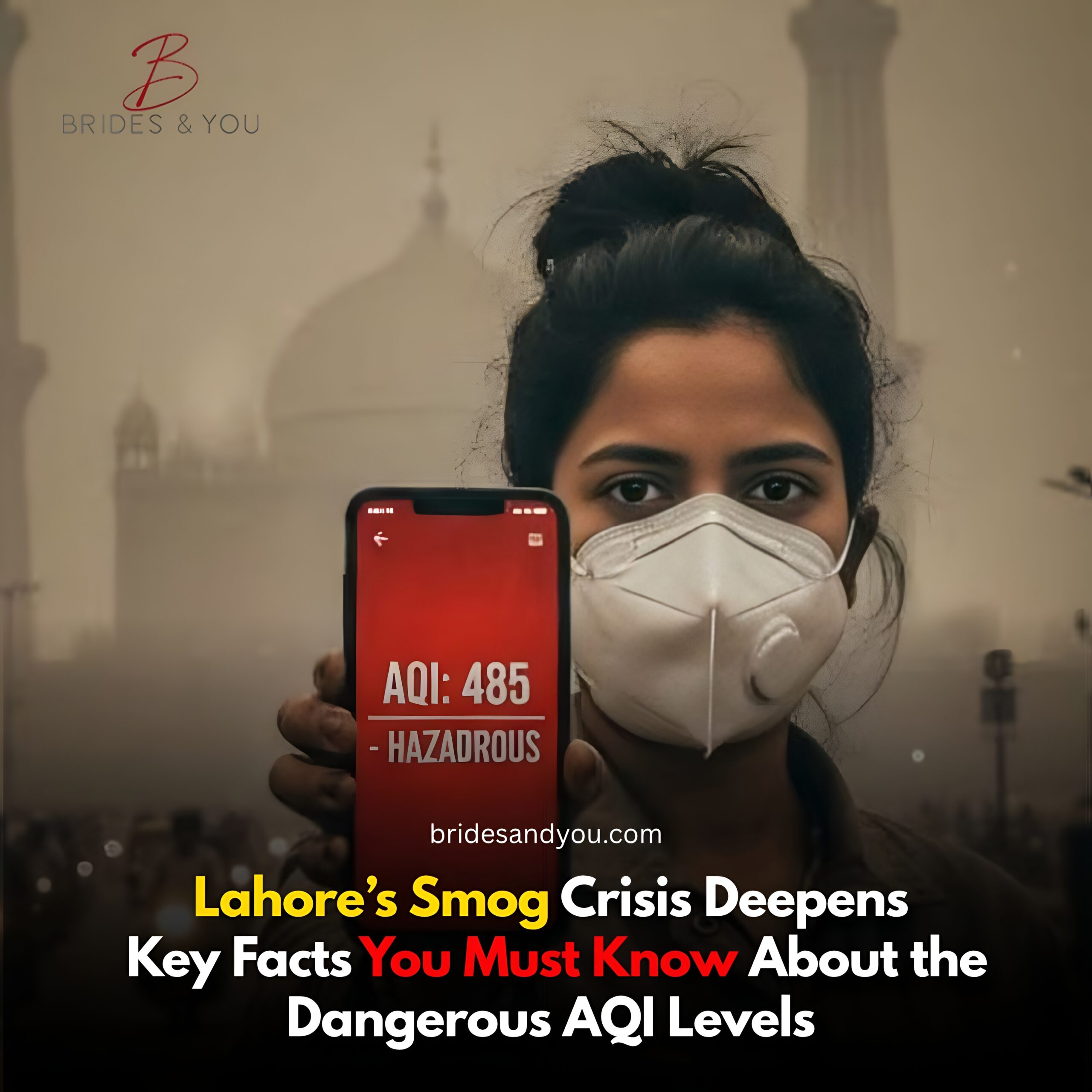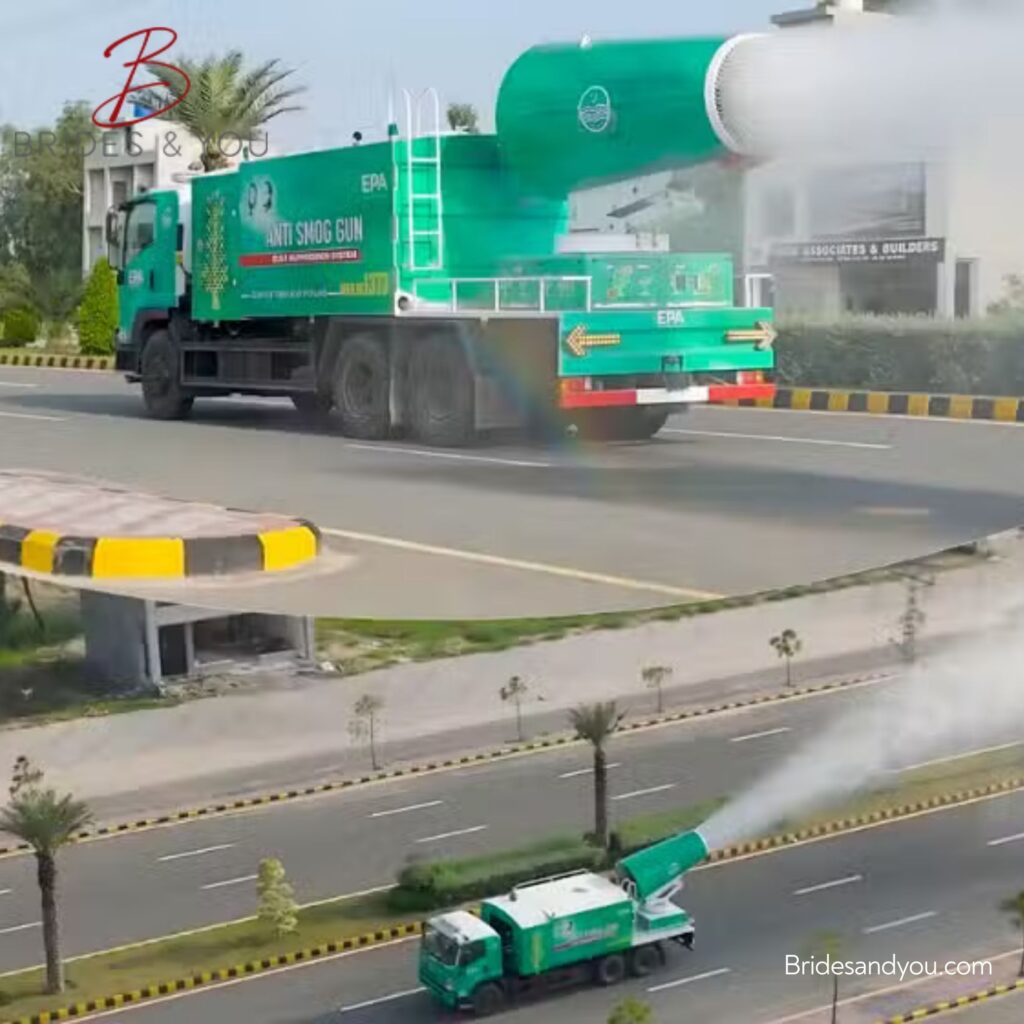Now Reading: Surviving Lahore’s Smog Crisis: Essential Tips to Stay Safe Amid Hazardous AQI Levels
-
01
Surviving Lahore’s Smog Crisis: Essential Tips to Stay Safe Amid Hazardous AQI Levels
Surviving Lahore’s Smog Crisis: Essential Tips to Stay Safe Amid Hazardous AQI Levels

Lahore’s Air Turns Toxic Once Again
Lahore, once known for its gardens and beautiful architecture, is now making headlines for something far more dangerous the Lahore Smog Crisis. Every winter, the city becomes shrouded in thick layers of smog that turn the sky grey and the air unbreathable. This year, the situation has reached an alarming level, as the PM2.5 concentration has crossed 30 times higher than the WHO guideline value.
The toxic haze has made life miserable for millions of residents, who now wake up every morning to a blanket of grey. Eyes burn, throats feel sore, and coughs have become a daily companion for many. Experts have warned that prolonged exposure to such high pollution levels can lead to severe respiratory and cardiovascular diseases.

Smog Drifting from Across the Border
Much of the smog choking Lahore comes from both local and regional sources. The massive wave of toxic air from Delhi which recently recorded a shocking Air Quality Index (AQI) of 500 has drifted into Punjab, worsening the crisis. Combined with local pollution from vehicles, crop burning, and industrial waste, this cross-border haze has pushed Lahore’s air quality deep into the hazardous category.
The Punjab government has launched an emergency response plan, forming a special task force to monitor and curb pollution. Measures like school closures, work-from-home options, and restrictions on industrial activity are under discussion. Yet, while authorities take action, residents must take personal precautions to protect themselves and their families.
Face Masks Are Your First Protection
With AQI levels soaring beyond 250, wearing a mask is not optional it’s a necessity. Ordinary cloth masks can’t stop fine pollutants like PM2.5 particles, which easily enter your lungs. Experts recommend using N95 or N99 masks, as they can block up to 95–99% of harmful particles.
If you frequently go outdoors, invest in reusable masks with replaceable filters. Remember to clean or replace filters regularly for maximum protection.
Clean the Air Inside Your Home
Even the air inside your home isn’t safe. Indoor air pollution can be up to five times worse than what’s outside, especially when doors and windows are open during smoggy days.
Here are a few ways to purify your indoor air:
- Seal all gaps in windows and doors to prevent smog from entering.
- Add air-purifying plants like peace lilies, snake plants, and aloe vera.
- Use HEPA air purifiers to trap microscopic dust particles.
The government may soon announce work-from-home measures or extended weekends, so ensuring clean indoor air will be vital for families spending long hours indoors.
Avoid Long Queues in Traffic
Traffic jams are one of Lahore’s worst pollution contributors. Cars, buses, and especially motorbikes emit high levels of smoke that worsen air quality.
To minimize your exposure:
- Avoid peak traffic hours.
- Carpool or use public transport to reduce the number of vehicles on the road.
- If possible, use a bicycle for short distances but only when air quality is moderate.
Every small step counts when it comes to reducing your carbon footprint and improving Lahore’s air.
Strengthen Your Immunity with a Healthy Diet
Smog not only affects your lungs but also weakens your immune system. A strong immune system is your body’s best defense against pollution. Include antioxidant-rich foods like:
- Spinach and kale – for Vitamin E and folate.
- Citrus fruits – high in Vitamin C to fight inflammation.
- Berries and nuts – rich in antioxidants.
- Ginger and garlic – natural detoxifiers.
- Omega-3 fatty acids from walnuts and flaxseeds – reduce inflammation.
Eating clean and staying hydrated can help your body fight back against the harmful effects of polluted air.
Avoid Outdoor Exercise During High Smog
Outdoor workouts may seem healthy, but during high AQI days, they do more harm than good. When you exercise, you breathe deeply, pulling more pollutants into your lungs.
If you must exercise:
- Check the AQI before heading outside.
- Avoid early mornings and late evenings when smog levels peak.
- Switch to indoor workouts such as yoga, pilates, or home cardio.
Stay Hydrated and Avoid Smoking
Water helps your body flush out toxins. Drink 2.5 to 3 liters of water daily to stay hydrated and keep your respiratory system clear.
Also, avoid smoking and refrain from burning incense or candles indoors. When the outside air is already hazardous, these activities can make your indoor environment even more dangerous.
The Way Forward
The Lahore Smog Crisis is not a seasonal inconvenience anymore it’s a serious environmental emergency. Long-term solutions like green energy adoption, urban forestation, and public transport improvements are essential to reduce pollution levels.
For now, citizens must stay informed, take precautions, and demand stronger environmental policies to secure a cleaner, safer Lahore for the next generation.













